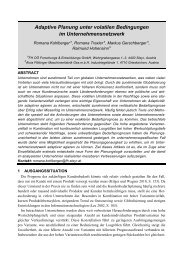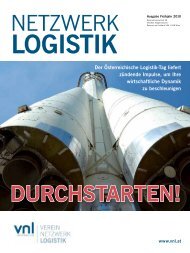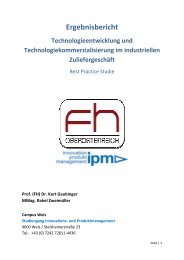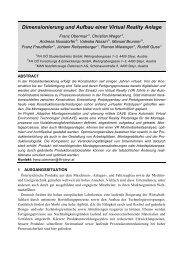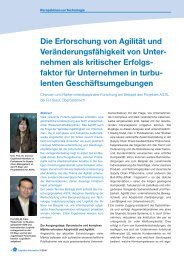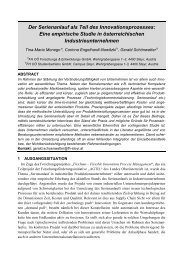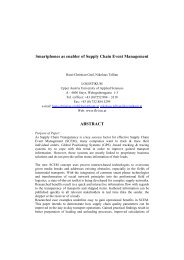a sustainable-oriented technology - agtil
a sustainable-oriented technology - agtil
a sustainable-oriented technology - agtil
You also want an ePaper? Increase the reach of your titles
YUMPU automatically turns print PDFs into web optimized ePapers that Google loves.
the commercial relevance of medium-sized companies within the supply industry in Austria and<br />
Germany, the conceived framework specifically targets the particularities of this industry.<br />
2 THEORETICAL FOUNDATIONS<br />
2.1 Technology Development and Process Orientation<br />
In many cases the outcome of <strong>technology</strong> development (TD) projects exhibit new correlation effects<br />
between the natural sciences and technical advancement (Strebel 2003) and therefore TD<br />
projects are often undirected, unfocused and more indistinctly defined than are product development<br />
projects (Cooper et al. 2002; Vahs and Burmester 2005). In this context Cooper (2006) emphasizes,<br />
that TD projects – where the outcome is new knowledge, a new technical capability or even a <strong>technology</strong><br />
platform (Cooper 2009) - are often the foundation or platform for new products of the company<br />
or of their customers. Some authors sub-divide the TD activities into the actual <strong>technology</strong><br />
development (“applied research”) and into the so-called advance development (Specht et al. 2002;<br />
Macharzina 2003). In principle, the advance development is responsible for application-<strong>oriented</strong><br />
further development of new technologies with regard to products and processes of the next or nextbut-one<br />
generation and in many cases the outcome of these activities are related prototypes (Diehlmann<br />
1998). Even though TD projects represent a small proportion of effort in the typical company´s<br />
development activities, they are often vital to the company´s growth and survival. Therefore<br />
TD projects have to be selected and managed in a systematic and focused way throughout a welldefined<br />
process model (Cooper 2006). One of the principal objectives of process models is to structure<br />
typical tasks in the corresponding field to ensure the targeted application of work techniques,<br />
methods and tools (Gaubinger et al. 2009). A well-defined process is transparent for all departments<br />
and a common understanding can be developed which eases communication within the company.<br />
Empirical studies (Cooper 2001) show that companies using a well-executed development process,<br />
are more successful than companies lacking a systematic approach. Because TD projects are quite<br />
different in terms of risk, uncertainty, scope and cost from typical new product development<br />
projects (Specht et al. 2002; Cooper 2009), these processes have to be different from traditional new<br />
product development processes.<br />
There exist a vast number of models which describe the “ideal” product development process (e.g.<br />
Cooper 1988; Thom 1980; Geschka 1993; Pleschak and Sabisch 1996; Vahs and Burmester 2005;<br />
Gaubinger 2009). They vary with regard to the degree of detail, the priorities and the perspective.<br />
However, Cooper expanded his product development process model to the so-called front end of<br />
innovation (Cooper 2008) and subsequently extended his scope to include systematic TD, which<br />
“feed the new product development process” (Cooper 2009). He “bolted on” the so-called “Stage-<br />
Gate TD process” which consists of three Stages and four Gates (Cooper 2006). The trigger for<br />
every TD process is an idea, which is the outcome of the preliminary stage “Discovery”. The first<br />
Gate in Cooper´s model is the idea screen where the decision is taken to commit a limited amount of<br />
time and money to the research project. The purpose of the first Stage is to build the foundation for<br />
the research project (Cooper 2006).<br />
In the second Gate a decision is made to begin limited experimental or technical work in the next<br />
Stage. The purpose of the following Stage 2 is to demonstrate the technical feasibility of the idea<br />
under laboratory conditions. Schuh et al. (2010) point out the increasing importance of joint TD<br />
within intercompany networks caused by rapid further development of technologies and the increasing<br />
importance of interdisciplinary issues.



